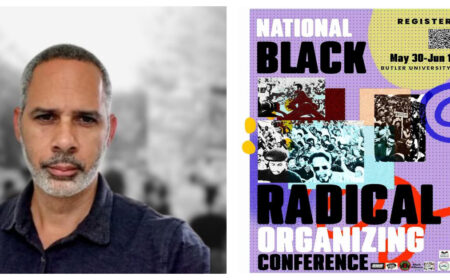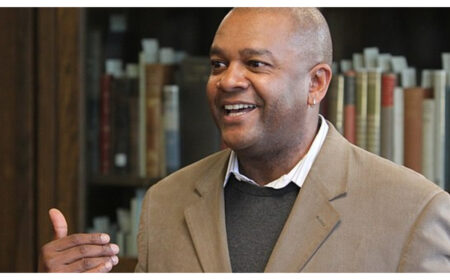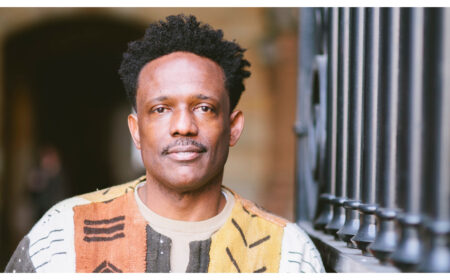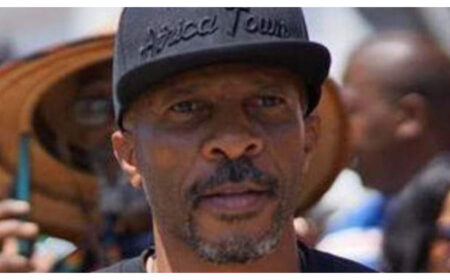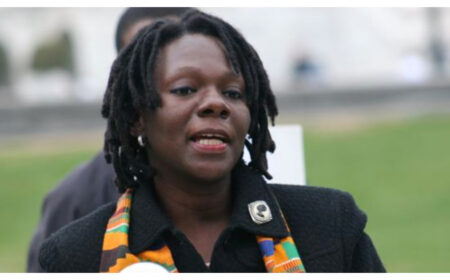WE MUST NEVER FORGET!!!
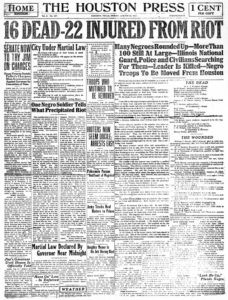
THE HOUSTON RIOTS/CAMP LOGAN MUTINY OF 1917 AND 19 BLACK SOLDIERS OF THE 24TH U.S. INFANTRY REGIMENT
The Houston Riot of 1917, also known as the Camp Logan Mutiny, involved 156 soldiers of the all-black 3rd Battalion, 24th
Infantry – a unit of the famed Buffalo Soldiers. The incident occurred on August 23, 1917, lasting roughly two hours on a hot, rainy night, and resulted in the deaths of four soldiers and 15 white civilians. The episode has the distinction of being the only
race riot in U.S. history where more whites then blacks were killed, and it also resulted in both the largest murder trial and the largest court martial in U.S. history.
Just months after America’s entry into World War I, the soldiers of this historic all-black unit had been dispatched to build military facilities in Harris County, where they met animosity from whites beyond the everyday insults of Jim Crow law. Here, the service of “arrogant, strutting representatives of black soldiery” was hated and feared. An Army report confirmed the Houstonians view of black soldiers, concluding that both police and white citizens felt that “a nigger is a nigger and that his status is not effected by the uniform he wears.”
On July 24, 1917, construction began for Camp Logan. Houston had gotten its military installation, and on July 28, it got 654 men of the all-black 24th Infantry – with its all-white commanding officer group. The unit had been dispatched from Columbus, N.M. for seven weeks duty guarding Camp Logan’s construction. Their arrival in Houston came three weeks after the most violent race war, a massacre really, had occurred in East St. Louis, when gangs of whites roamed through black neighborhoods
indiscriminately beating and murdering black men, women, and children on July 1-3. (Some of the 24th soldiers had donated money to a fund to help the black victims in East St. Louis.)
In striking their deal with the federal government, Houston officials had promised “in the spirit of patriotism” there would be no racial trouble, that black soldiers would be welcomed, but the city’s whites had no such intention of opening their arms to the 24th, regardless the length of their stay.
Chief of Police Clarence Brock, whose 159-man force already had a miserable reputation of brutality and other forms of ill-treatment towards the city’s black populace, had even instructed his men to avoid using the term “nigger” when
addressing the soliders, but that edict was widely ignored as patrolmen harassed and arrested soldiers for minor infractions and
perceived slights that further increased racial tensions in a city where blacks were openly and routinely referred to as “niggers” by
police and white citizens alike. Gradually, the soldiers began to routinely disobey the Jim Crow laws, especially when it came to public transport and the requirement that they sit in the back of trolleys – which many of the soldiers refused to do. Their disobience and “insolence” led to predictably harsh enforcement from police and white Houstonians hurled insults at the soldiers at every turn, as did white soldiers and workers constructing Camp Logan. But none were more brazen in their verbal and physical attacks than Houston policemen. Yet, for the evening of August 23, the Houston Chamber of Commerce had planned a festive “watermelon party” to officially welcome the black soldiers. Instead, Houston got a chaotic evening of frenzied terror it would never forget, and rarely mention.
That morning, patrolman Lee Sparks, whose penchant for brutality
against blacks was well known, and his partner, Rufus Daniels, had pursued a man accused of participating in a dice game. Their
chase led them to a house where they arrested a thinly clad woman and accused her of hiding the man. Outside, near the police call box, a 24th soldier approached and asked Starks what was going on and if he could get clothes for the woman.
Sparks immediately began pistol-whipping the soldier and supposedly said, “That’s the way we do things in the South. We’re
running things not the damned niggers.”
Later, that afternoon, a military policeman from the 24th, Corporal Charles Baltimore, became involved when he inquired of
the soldier’s arrest. Baltimore was also beaten by Sparks, and then shot at as he fled. He was caught, beaten again and taken to the police station. Once he was set free and sent back to camp all beaten up, the infantry became angry, and decided to strike on the evening of August 23. 156 angry soldiers, stole weapons from the camp depot and marched on the city of Houston. They were met outside the city by the police and a crowd of armed citizens, frightened by the reports of a mutiny. A virtual race riot began, which left 20 people dead – four soldiers, four policemen, and 12 civilians.
Order was restored the next day, and the War Department disarmed the soldiers. The Third Battalion was sent by rail back to New Mexico. Martial law was declared in Houston, and the Third Battalion was returned to Columbus, New Mexico. Seven of its soldiers agreed to testify in exchange for clemency. Once there, 118 of them were arrested and charged with murder and mutiny and were sent to the stockade at nearby Fort Bliss in El Paso to begin their wait for court martial.
Between November 1, 1917 and March 26, 1918, the army held three separate courts-martial with the first, United States v.
William C. Nesbit, convening in San Antonio at Fort Sam Houston’s Gift Memorial Chapel, which had the only space on post large
enough to hold a trial for the first 63 men – all represented by a single attorney working on a mere two weeks preparation. (Maj.
Harry S. Grier was inspector general of the 36th Divison and had taught law at West Point, but had no trial experience and was not
a lawyer.) Their charges were: disobeying orders, mutiny, murder, and aggravated assault. All of the men entered not guilty pleas and throughout the ordeal, even to the gallows, maintained their innocence.
Some witnesses may have been coerced into testifying against their fellow soldiers, others promised leniency or immunity,
others merely unreliable, but none of the testimony was conclusive that any of the men on trail had participated in the event. In all, testimony was heard from 169 prosecution witnesses, but only 29 for the defense. On November 28, 13 of the men were sentenced to be hung, however, they were not notified of their sentence until Dec. 9, two days before their execution.
Sgt. William C. Nesbitt
Corp. Larsen J. Brown
Corp. James Wheatley
Corp. Jesse Moore
Corp. Charles W. Baltimore*
Pvt. William Brackenridge
Pvt. Thomas C. Hawkins
Pvt. Carlos Snodgrass
Pvt. Ira B. Davis
Pvt. James Divine
Pvt. Frank Johnson
Pvt. Rosley W. Young
Pvt. Pat MacWharter
In a final letter to his family, Pvt. 1st Class Thomas C. Hawkins wrote:”Dear Mother and Father, When this letter reaches you
I will be beyond the veil of sorrow. I will be in heaven with the angels…I am sentenced to be hanged for the trouble that
happened in Houston, Texas. Altho (sic) I am not guilty of the crime that I am accused of, but mother, it is God’s will that I go
now and in this way….”
Pre-dawn, on December 11, near Salado Creek, the 13 soldiers were taken to hastily constructed gallows and summarily
hung. There had been no notice given to the media or public and their sentences and hangings would not be formally announced until later that morning. As they were escorted to the gallows, the soldiers were reportedly calm and sang hymns.
A white soldier from Company C., 19th Infantry, which had been charged with guarding the prisoners – “the hanging detail,” it
was called – recounted the scene: “The doomed men were taken off the trucks, not one making the slightest attempt to resist. They
were shivering a little, but I think this was due more to the cold rather than fear. The unlucky thirteen were line up. The conductors took their places and the men for the last time heard the command, “March!” Thirteen ropes dangled from the crossbeam of the scaffold, a chair in front of every rope, six on one side, seven on the other. As the ropes were being fastened about the men’s necks, big (Pvt. Frank) Johnson’s voice suddenly broke into a hymn – “Lord, I’m comin’ home” – and the others joined him. The eyes of even the hardest of us were wet.”
Because the U.S. was at war, the swiftness of the executions was backed by the Articles of War. However, that did not temper
the outrage from the black community, including the National Association for the Advancement of Colored People, but also some
military officials. Acting Judge Advocate Gen., Brig. Gen. Samuel T. Ansell, was particularly angered and said: “The men were
executed immediately upon the termination of the trial and before their records could be forwarded to Washington or examined by
anybody, and without, so far as I can see, any one of them having time or opportunity to seek clemency from the source of
clemency, if he had been so advised.” The sentence was carried out without appeal. Two more mass courts-martial would follow, resulting in six more hangings the following year. While the NAACP began a campaign to obtain the release of the imprisoned soldiers, General Order No. 7 (which Ansell proposed) was issued on January 17, 1918 providing that no enlisted personnel could be executed without first examination of the trial records by the judge advocate general and confirmation of the sentence by the president of the United States. That commuted 10 death sentences in the two other trials, but had no benefit for the 13 black soldiers of questionable guilt buried in the far reaches of Fort Sam Houston in makeshift graves.
The military tribunals indicted 118 enlisted men total for participating in the mutiny and finding 110 guilty. A total of 19 soldiers were hanged and 63 received life sentences in federal prison. One soldier was judged incompetent to stand trial. Two white officers faced courts-martial, but were released. No white civilians were brought to trial. Some soldiers served as many as 20 years before their release.
For years afterward, the incident clouded and complicated race relations, especially in the War Department.
Some blacks openly applauded the mutiny as a justified resistance against racist provocation. This inflammatory opinion piece, quoted in Mark Ellis’ Race, War and Surveillance, landed the editor who agreed to run it in federal prison:
“We would rather see you shot by the highest tribunal of the United States Army because you dared to protect a Negro woman from the insult of a southern brute in the form of a policeman, than to have you forced to go to Europe to fight for a liberty you cannot enjoy. Negro women regret that you mutinied, and we are sorry that you spilt innocent blood, but we are not sorry that five southern policemen’s bones now breech in the graves of Houston, Tex.”
Meanwhile, the U.S. Army noted “the tendency of the Negro soldier, with fire arms in his possession … to become arrogant, overbearing, abusive and a menace to the community in which he happens to be stationed.” It held down its black enlistment throughout the interwar period.
This policy would continue — until the raw manpower of Black men was required in World War II trumped the discussion.
